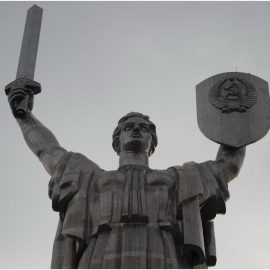

This article is an excerpt from the Shortform book guide to "How to Be an Antiracist" by tIbram X. Kendi. Shortform has the world's best summaries and analyses of books you should be reading.
Like this article? Sign up for a free trial here .
Who was Garrison Frazier? How did the Black leader end up seeming to request segregation for Black people?
Garrison Frazier was consulted in 1865 by US leaders when they asked him if Black people would prefer to live apart from White people. He said yes, and they provided his people with land and a mule, but that was it.
Read more about space racism, Garrison Frazier, and the difference between separation and segregation.
Overview of Space Racism
Space racism is a combination of racist policies and ideas that aim to eliminate racialized spaces or that cause resource inequity between racialized spaces, the main idea being the belief that certain racialized spaces are more deserving of resources than others.
In reality, no racialized spaces are any better or worse than others. Inequities are due to policy, not the people who live in or govern spaces. The antiracist view of spaces is that racial spaces should be acknowledged and protected, that no spaces bar anyone from entry, and that all spaces are allocated equal resources. No race should have a majority in politics or culture.
History and Invention of Space Racism: Garrison Frazier
Space racism begins in the US in the early 1800s. According to slaveholders, people in Africa, which was a Black space, were ignorant, immoral, and wild, and a space like this had no business existing. Thomas Jefferson proposed a solution—civilize and free Black people in the US and then send them to Africa so they could teach the rest of the country how to be civilized. However, Black people typically wanted to stay in their existing spaces and had no interest in going to Africa.
In 1865, Edwin M. Stanton, US secretary of war, and General William T. Sherman met with a group of Black leaders including Garrison Frazier. Stanton asked Garrison Frazier if his people would rather live in communities of Black people or spread out among White people. Garrison Frazier said Black people would rather live separately from Whites because it would take a long time for White people to get over their prejudices and it would be uncomfortable to interact with them in the meantime. Sherman gave Frazier and his people land and an army mule and ordered that they alone should be in charge of their land and affairs.
Separation, Segregation, and Integration
Garrison Frazier and his people wanted separation, not segregation, which is quite different. Antiracist separation is one group wanting to put some space between themselves and racist groups. Segregation is one group wanting to put some space between themselves and other groups that it views as inferior. Segregation was marketed as “separate but equal,” but racialized spaces were never treated equally because segregationists saw certain spaces as more deserving of resources than others.
In addition to separation and segregation, there’s one additional school of thought on spaces: integration. Integrationists believe that when people of color enter White spaces, they’ll become civilized, and that White people will let their racism go as a result of interacting with people of color. According to integrationists, integration will also prevent non-White spaces from becoming centers of White hate.
Integration doesn’t take into account the fact that it’s going to be hard for people of color to heal when White people haven’t finished attacking them. Additionally, following integration to its final end would result in every race being divided in every space based on their percentage of the national population. For example, in any given US space of 100 people, 12.7 of them would be black, 4.8 of them would be Asian, and 61.3 would be White. Every space would have more White people than any other race and all spaces would become White.

———End of Preview———
Like what you just read? Read the rest of the world's best book summary and analysis of Ibram X. Kendi's "How to Be an Antiracist" at Shortform .
Here's what you'll find in our full How to Be an Antiracist summary :
- What racism is and how it evolved
- How you might have subtle racist thoughts and not even be aware of them
- Why being "not racist" isn't good enough






